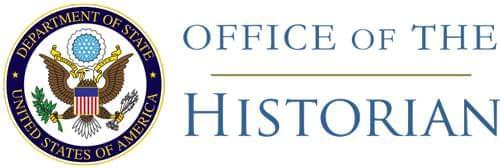ODA files, lot 62 D 225, “Trust and NSGT’s, General”
Memorandum by the Deputy Director of the Office of Dependent Area Affairs (Robbins)1
Summary Narrative—Dependent Overseas Territories—Western Hemisphere
The fourteen Western Hemisphere Dependent Overseas Territories of European Countries (DOTS) are of importance to the United States because of their geographic position which has made them of vital importance in our national defense. In addition to their strategic importance, certain of these DOTS are important suppliers of bauxite and petroleum products. Surinam, British Guiana and Jamaica export to the United States approximately 80% of the total United States imports of this ore and currently produce approximately 59% of the Free World supply of bauxite. Oil from Venezuela is refined in the Dutch West Indies (Curaçao and Aruba) and the total capacity of the two large refineries there amounts to about 6% of the Free World supply. [Page 1370] Other strategic minerals in small quantity are produced in British Guiana—columbite and tantalite—which in 1953 amounted to 2 or 3% of the Free World supply. It is known that manganese is present in that colony. The United States has military leased-base areas until the year 2040 in Trinidad, Jamaica, St. Lucia, Antigua, the Bahamas and British Guiana—a defense of the Panama Canal.
The economics of the DOTS are almost wholly based upon agriculture. These DOTS are plagued by under-developed economics, chronic unemployment and underemployment, disease, illegitimacy, illiteracy, political immaturity, and a weak social structure. The island DOTS are heavily overpopulated and the high birth rate make some of these areas among the most densely populated in the world. On the other hand, the three Guianas and British Honduras are under-populated.
british guiana
In British Guiana, the largest of the British DOTS, the United States has leased-base areas including an important air base to which this Government retains re-occupancy rights. Its main agricultural products are sugar and rice and its main industries are extractive ones—bauxite, gold and diamonds. British Guiana came into world prominence in October, 1953 when a communist oriented government popularly elected in April, 1953 was overthrown by the British Government, troops were landed and the constitution was revoked. British Guiana is now operating under an interim government, the stability of which is maintained by the British Government. The success of the Communists there arose out of the bad economic situation—a rapidly growing population with severe unemployment, poverty, disease, bad housing, and lack of economic planning or development. The situation is complicated by the mixed racial composition containing East Indians, colored, and Amerindians.
The United Kingdom has recently announced a large scale economic development plan to be financed over a period of years. The United States programs in the field of technical assistance will supplement and complement the British economic development program and should alleviate in some measure the adverse economic conditions which feed the communist cause.
surinam
Surinam (Dutch Guiana) is the chief supplier to the United States of bauxite and was the site of a strategic base during World War II. It has huge timber resources which have not been well developed. The country is still basically agricultural in its economy, but farming is restricted to the coastal plain and not well developed even there although the rich clay-lands are suitable for producing such important export products as rice, coffee and cocoa. The only industry of export [Page 1371] importance, other than mining, is sawmilling and the manufacture of plywoods.
Surinam is one of the least developed of the Caribbean DOTS although it has some of the greatest potentialities of the area. It has insufficient roads, adequate irrigation and sanitation, and soil erosion control. The Netherlands and Surinam Governments have worked out a ten-year development plan and the International Bank has recently surveyed the economic potentialities of Surinam and has stated that it would consider sympathetically requests for financial assistance in connection with Surinam’s economic development plans. United States technical assistance will supplement both Dutch and Surinam economic development plans.
The diversity of its population—mainly East Indian, West Indian, Javanese, Bush Negro and Amerindian (Arawak Indian) complicates both the economic and social picture. Although many of the factors that were present in British Guiana exist in Surinam, Communism has not gained a stronghold. Its government is stable and friendly to the United States.
- Drafted by McReynolds of the Office of Dependent Area Affairs, sent to Newman of the Office of the Special Assistant for Mutual Security Affairs, on Mar. 8, 1954, in connection with material being assembled for the 1955 budget of the Foreign Operations Administration.↩
